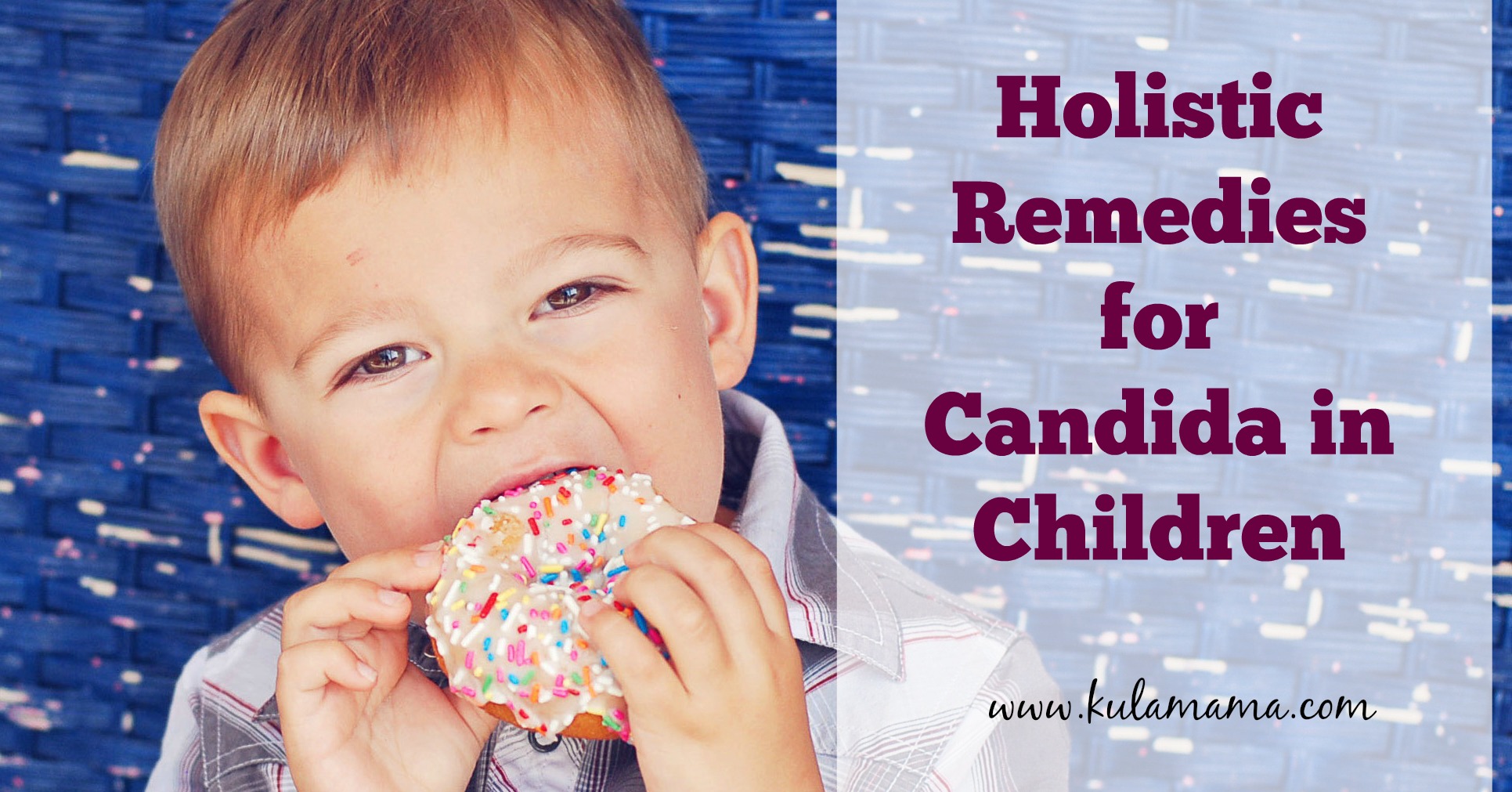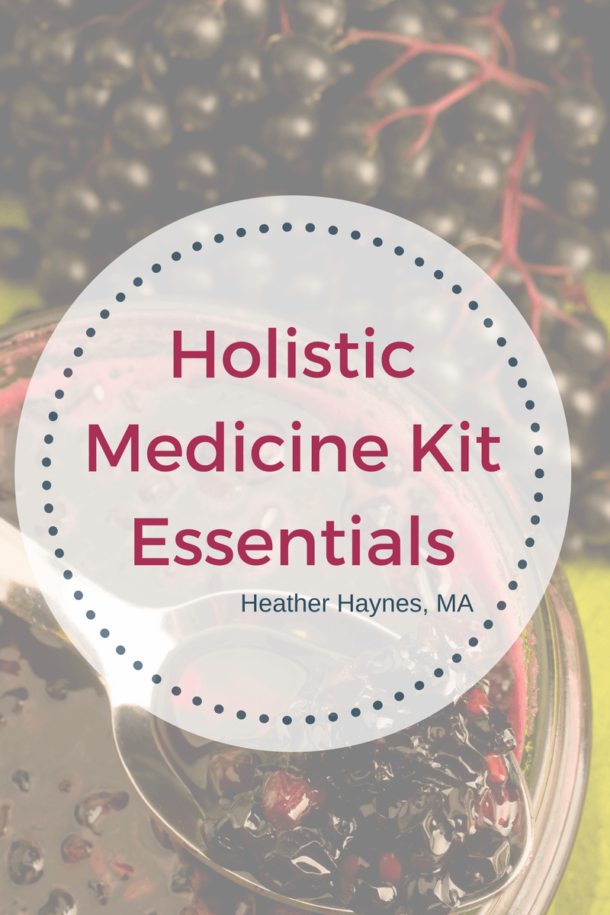Last week my son woke in the middle of the night complaining that he was itchy. We didn’t think much of it until the next morning when I took a look in his mouth, saw a nice white layer coating his tongue, and noticed a “different” smell to his breath. Uh oh—YEAST. A quick check in with our doctor confirmed my suspicions and we’ve been on a natural, anti-yeast program for over a week with good results. I’ll share with you what has been working for us, but first let’s talk for a minute about yeast overgrowth, or candidiasis.
What IS a Yeast Infection?
When you think of a yeast infection in babies and children you may think of thrush in the mouth (the telltale white-coated tongue that I saw on my son) but there are many other symptoms and complications associated with an overgrowth of yeast. A yeast infection, or candidiasis, is a fungal infection, usually caused by an overgrowth of candida albicans, but it can also be caused by different species of fungus. All of us have varying amounts of candida in our body, and in healthy individuals this is not a problem because our immune system and healthy gut flora keep the fungus under control. However, when our gut becomes imbalanced, due to injury, a bacterial or viral infection, medications, toxic environment or a poor diet, the candida can multiply and become a problem.
Symptoms to Look for in Children
Candidiasis is a tricky condition because the symptoms mimic many other conditions and can be hard to track down. It is estimated that as many as 1 in 3 people suffer from a candida overgrowth. For children, the most common symptoms are listed below.
Common Symptoms of Candida in Children*
ADHD
Athlete’s foot
Colic
Constipation and/or diarrhea
Craving for sugar and sugary foods (breads, cakes, chocolate)
Frequent diaper rash
Ear infections, recurring
Fatigue, lethargy, feeling drained
Food allergies and sensitivities
Gas and flatulence
Headaches, frequent
Itchy anus
Learning or behavioral problems
Skin problems like eczema or hives
Thrush
Vaginal or bladder infections, recurring
*Source: Digestive Wellness for Children by Elizabeth Lipski and New Medicine by Dr. David Peters
When are Children Susceptible to Candida Overgrowth?
In children, candidiasis is most often seen after a round of antibiotics or corticosteroids, when the healthy gut flora is killed off along with the bad bacteria. During the time after the medication is taken, the gut is out of balance. Not only is immune function compromised (remember over 70% of our immune system is in the gut and we rely on healthy gut flora for proper immune function), but because the healthy flora is wiped out, an environment for yeast overgrowth is also present.
Parents may also want to pay attention to their children’s health after a vacation or extended time of celebration when children are eating a lot of sugar. Sugar feeds yeast and other bugs, so if your child’s diet is filled with refined flours and sugar, be aware!
Our guts are particularly sensitive when we are sick and while we are recovering from a virus or bacteria. When your child is feeling under the weather, watch his sugar intake to help prevent a yeast overgrowth from occurring.
And finally, it is a good idea to check for underlying bacteria or viruses in the body. According to health expert, Anthony William, candida is often a sign that the body is fighting a virus or bacteria in the gut. William says the candida fungus is growing to protect us from an underlying infection! I encourage you to read more about his information here, it’s been very helpful for us. Viruses and bacteria cause disruption to the digestive tract and provide an opportunity for candida to multiply. In our case, we recently moved to Argentina and my son has had stomach issues since our move. Along with our anti-candida program, we are also testing him for parasites, viruses and bacteria.
Natural Remedies for Candida Overgrowth
To combat a candida overgrowth, there are really three main areas to consider: 1) starve the yeast (and bacteria and viruses) through a healthy, plant-based diet, 2) kill off the yeast with immune-boosting herbs or supplements, and 3) re-build healthy gut flora and heal intestinal lining that has been damaged by the fungus.
There are many versions of the “anti-candida diet” and most of them focus on the same general food guidelines. First, sugary foods should be eliminated because sugar feeds yeast and bad bugs in the body. This includes breads, cakes, pizza, pasta, refined syrups, cookies…you get the idea. Also foods that contain yeast, mold or vinegar should be avoided such as; aged cheeses, vinegar, peanuts, pistachios, mushrooms, dried fruit, prepared foods and soups, ketchup, mustard, beer and wine, pickles, prepared salad dressings and soy sauce. I know some diets say to remove fruit, but according to Anthony William, this is the wrong choice as fruit is very healing for the body (read more here). Intuitively this felt right to me so we kept fruit in my son’s diet with good success. Additionally, while the intestinal lining is compromised by a yeast overgrowth, it is wise to keep gluten, dairy, eggs, soy and corn out of the diet. These changes are hard for a child to make, but in our case my son was uncomfortable enough to try anything and he is now acutely aware that what he eats impacts his health. This experience might turn out to be a blessing in disguise.
There are many herbs and supplements that can help to eliminate a fungal infection. Anti-fungal pharmaceuticals are also offered to kids with candida, however, we chose to go the herbal route. One of the reasons I like using herbal therapies for kids is because certain herbs can kill a variety of invaders (fungus, virus, bacteria) while pharmaceuticals often only kill one type (for instance antibiotics only kill bacteria). Also, herbs are easier on the liver so I always try the herbal route first and so far (knock on wood) they have worked for our son.
Dosage information can be found in the books I’ve listed at the end of the article. Dosage should be tailored to your child’s weight, age and severity of infection. Additionally, when the treatment begins, a “die-off” reaction is highly likely. Therefore, you want to start gradually, with low dosage, and gently increase supplementation as your child tolerates. Continue to support the immune system and liver throughout the healing process. Supplements to consider are listed below. Please work with a qualified holistic health practitioner and do your research before starting any program for your child. The list below is an extensive list of options and you do not want to use them all at once.
Holistic Remedies to Consider for Candida Overgrowth:
Clean, plant-based diet
Oil of Oregano: Powerful anti-viral, anti-fungal, anti-bacterial, anti-parasitic. This is a staple in my first aid kit but I recommend using it under the supervision of a holistic practitioner.
Lauricidin: Anti-fungal, anti-bacterial, anti-viral. These small pellets are easier for kids to swallow.
Garlic: Anti-bacterial, anti-microbial, anti-fungal, anti-viral. A natural powerhouse, but kids may not want to eat raw garlic! Try an apple sandwich and place a thinly sliced piece of garlic between two slices of apple. Or you can try chopping up garlic and hiding it in a spoonful of honey.
Probiotics: It is supremely important to increase your child’s probiotic intake during a yeast infection. Make sure you choose a high quality supplement that has a high adherence rate. More on probiotics here.
Epsom salt, tea tree oil and vinegar baths: Epsom salt helps detoxify the body, while tea tree oil and vinegar eliminate yeast. This is helpful if your child is uncomfortable due to a yeast rash. When my son felt itchy, the bath did wonders.
Sunlight treatments: Sun kills yeast! If your child has a yeast diaper rash or irritated bottom, have them sit in the sun for 15-20 minutes and expose the infected area. This was a sight to see at our house, but the results were dramatic.
Additional anti-candida herbs to consider: Oleic acid (from olive oil), thyme oil, olive leaf extract, biotin, caprylic acid, pau d’arco, cat’s claw.
To Increase Immune Function, Lower Systemic Inflammation and Support Detoxification:
Follow a plant-based diet
Ester-C: To increase immune function during healing.
Omega-3 fats: To lower systemic inflammation and support immune function. We use an algae-based omega supplement.
Mineral Broths: Drink homemade mineral broth as much as possible both during and after infection. This helps to decrease inflammation in the digestive tract and also contains trace minerals for healing. .
Liquid zinc: to support immune function.
Aloe leaf: wonderful to soothe an irritated gut and clear pathogens from the digestive tract. Check out this recipe for aloe water here.
Additional herbs that heal the digestive tract: Slippery elm, marshmallow root, l-glutamine.
Sources and Resources:
Medical Medium by Anthony William
Digestive Wellness for Children by Elizabeth Lipski PhD, CCN
New Medicine by Dr. David Peters
Staying Healthy with Nutrition by Elson M. Haas, MD
Life-changing Foods by Anthony William




Great advice Heather! And a good reminder for me to go buy some more GSE. Yet another helpful article I will be sharing w/ my mama friends.
Hi! Thanks for the article. I know this article is in regards to children but I was curious if any of the suggestions for helping with the candida overgrowth are the same for adults. I worked for a holistic doctor for a short time and she told me that I have an overgrowth. She suggested that I take something called Candida G. I did take it for a little bit but I didn’t notice a change in my symptoms (extreme dizziness to the point that I feel like it’s not safe for me to drive, anxiety, restless legs, problems sleeping). I have a young baby now and she keeps me on my toes so I don’t have much of a problem falling asleep anymore 🙂 but the dizziness is still awful!! I just started taking probiotics a week ago. I really hope I notice a difference. This has been going on for 8 years (after I was advised to take and antibiotic for 9 months because of a positive TB test). I’m SO tired of being dizzy all of the time! I just want to feel healthy! Any suggestions you have are greatly appreciated! Thank you!
I am glad I found your site, my son struggles with yeast overgrowth and I want to try some of the ideas listed above. Unfortunately, I as well have the same issues. I am currently pregnant and I am wondering which of the above suggestions are safe for me to do at this time?
You can definitely watch your sugar intake and also take a high quality probiotic! That would help while pregnant!
My daughter is on her second day of biocidin. Maybe I’m overthinking things but I’m worried about the oil of oregano in it and that it kills some lactobacillus in gut. Any thoughts?
Hi Renee, Good question. There are varying opinions about whether or not essential oils actually make it down to the gut or if they are absorbed in the stomach. I’ve read differing opinions and have not seen any studies to date (that doesn’t mean there aren’t any studies, I just haven’t seen them). Any anti-fungal is going to affect gut flora so when I used this with my son ,to be safe, we used a probiotic plus followed up with ongoing probiotic support to replenish any gut flora.
Hi there
Thank you so much for posting this. My 15 month old has suffered wth 9 ear infections, numerous thrush infections, yeast diaper rashes, a bloated belly, on and off diarrhea, etc. repeated colds and doctors keep telling me he has a bad immune system and there is nothing we can do. They deny any yeast overgrowth problems. I lost all hope until a health store owner told me he is having these issues due to yeast overgrowth. Is it true that it can cause all those? I pray for a solution.
Absolutely yeast can cause all those problems and there is absolutely something you can do to heal your child. I would recommend finding a functional doctor (and leaving the doctor who told you there was nothing you can do to improve immune function) or a naturopathic doctor to help you.
Great blog! Do you have any tips and hints for aspiring writers?
I’m planning to start my own site soon but I’m a little lost on everything.
Would you recommend starting with a free platform like WordPress or go for a paid option? There are so many options out there that
I’m completely overwhelmed .. Any ideas? Cheers!